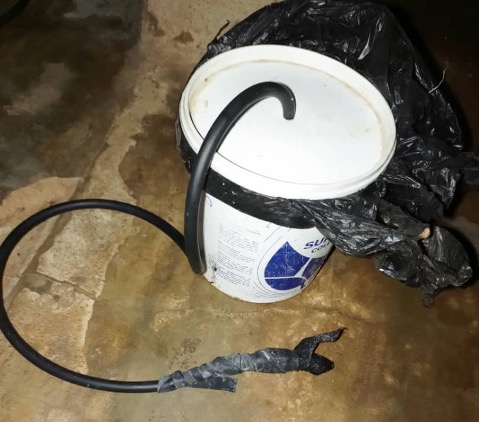
[This photo demonstrates tools the Gaoussou and his team used to produce biogas for household use]
The Problem and Motivation Behind
“We’ve noticed that young people in our region are jobless. Because they don’t have jobs, they get involved in risky things—stealing, taking drugs. Some even ended up in jail just because they were hungry … We also noticed that our crops are no longer tasty. The quality has dropped. So, we decided to combine these two problems—unemployment and environmental degradation—and come up with a solution that tackles both.” – Gaoussou Camara
Gaoussou Camara, a 24-year-old youth leader, and his team witnessed firsthand how many young people, including themselves, were left without income, employment opportunities, or direction. At the same time, their communities were facing severe environmental degradation, caused by deforestation and the use of chemical fertilisers.
The frustration of seeing young people, including members of their own team, drift into risky behaviours due to joblessness motivated them to explore how youth could contribute to environmental conservation while also gaining access to employment opportunities.
The Innovative Solution
“If we give young people jobs that are eco-friendly, it’s a win-win—for them and for the environment.” – Gaoussou Camara
When Gaoussou and his team joined the Youth Innovation Lab, they chose to address problem of use of environmental degradation and youth unemployment in their region. Through a Design Thinking process, they began by listening to the concerns of local farmers and unemployed youth. They learned that soil quality had significantly declined, making it less productive for growing crops than in the past. They brainstormed potential solution that address the declining soil quality and create employment opportunities for youth. This led to the idea of Baara Center that seeks to provide stable, green employment to young people through training youth on turning organic waste into biogas and organic fertilizers, reducing the need for firewood and chemical fertilisers. This solution enables youth to earn a living while also contributing to environmental preservation.
They partnered with local producers working in producing organic fertilizers and biogas to develop a prototype of a practical training for youth on different techniques and tools they use. They count on that once young people are exposed to this field, they might change their perception of environmental work and commit to building careers in it.
Though Gaoussou and his team had received very positive feedback on their prototype, they were not to implement to conduct youth trainings as the planned due to lack of financial resources, needed to cover cost of the tools and trainers. However, they started on their own to produce the biogas using simple tools and encourage other youth to do the same inside their houses. “We’ve completed the project design and started biogas production. But we haven’t launched youth training yet—because we need resources. That’s what’s holding us back.” – Gaoussou adds.
Lessons Learned and Addressing Challenges
“The lab taught us how to become entrepreneurs and how to assess the needs of our communities. It was a very enlightening experience.” – Gaoussou.
Gaoussou and his team received training from the Youth Innovation Lab, which helped them better understand the needs of their communities and apply design thinking to turn their ideas into a structured solution. For Gaoussou, who had just graduated from university, the experience gave him confidence in his skills and abilities.
Reflecting on their experience, Gaoussou Identified a major lesson learned:
- Don’t wait for funding start small and build momentum – Although the team has the knowledge and local partnerships needed to begin training youth, their solution has not yet been implemented due to financial limitations. Despite this, Gaoussou and his team have remained determined. They continue working on small-scale biogas production and building alliances with partners in agriculture, renewable energy, and communications.
Next Steps and Future Aspirations
“We have the capacities to do this work, to implement this project—but without financial support, we cannot go far.” – Gaoussou .
Looking ahead, Gaoussou and his team envisions their solution, Baara Center to become a leading hub for green jobs in the Ségou region. Their next steps include:
- Securing funding to cover training materials, trainers’ costs, and stipends for youth.
- Launching the youth training programme in organic fertilizers and biogas production
- Raising awareness among youth about the potential of careers in environmental protection
- Expanding partnerships with bioenergy producers and environmental organisations